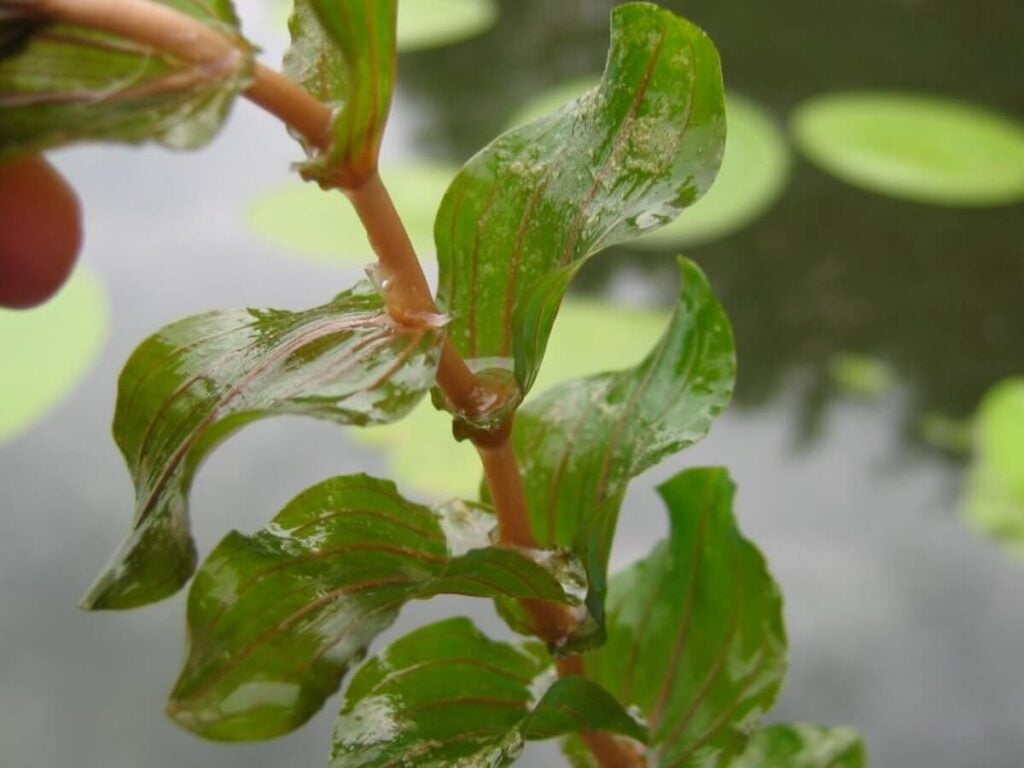Fanwort
Many people ask how to get rid of cabomba or fanwort. The following options can be considered for how to control fanwort. Click here to read more about identifying this plant. Manual/Mechanical Control: If you are considering how to remove fanwort, physically pulling this plant and digging up the roots can be a somewhat…
Read MoreEgeria
Many people ask how to get rid of Egeria. The following options can be considered for how to control Egeria. Click here to read more about identifying this plant. Manual/Mechanical Control: If you are considering how to remove Egeria, physically raking or seining this plant can be a somewhat effective method of control. However,…
Read MoreElodea
Many people ask how to get rid of Elodea. The following options can be considered for how to control Elodea. Click here to read more about identifying this plant. Manual/Mechanical Control: If you are considering how to remove Elodea, physically raking this plant and digging up the roots can be a somewhat effective method…
Read MoreEelgrass
Eelgrass can be found across much of the U.S., but it is most common in the northeast, upper midwest, and Florida. Because of eelgrass’s creeping root systems, it is difficult to eradicate this plant completely. The following options can be considered for how to control eelgrass, also called Vallisneria or wild celery. Click here to…
Read MoreWater Buttercup
Many people ask how to get rid of water buttercup. The following options can be considered for how to control water buttercup. Click here to read more about identifying this plant. Manual/Mechanical Control: If you are considering how to remove water buttercup, physically raking this plant and digging up the roots can be a…
Read MoreBladderwort
Many people ask how to get rid of bladderwort. The following options can be considered for how to control bladderwort. Click here to read more about identifying this plant. Manual/Mechanical Control: If you are considering how to remove bladderwort, physically raking or seining this plant can be an effective method of control. Herbicide…
Read MoreWater Stargrass
Many people ask how to get rid of water stargrass. The following options can be considered for how to control water stargrass. Click here to read more about identifying this plant. Manual/Mechanical Control: If you are considering how to remove water stargrass, physically raking this plant and digging up the roots can be a…
Read MoreParrot Feather
This special type of watermilfoil is invasive and can quickly outcompete native species. While only female plants exist in the United States, parrot feather roots grow new shoots in the spring or reproduces from fragments. The following options can be considered for how to control parrot feather. Click here to read more about identifying this…
Read MoreSago Pondweed
Many people ask how to get rid of sago pondweed. The following options can be considered for how to control sago pondweed. Click here to read more about identifying this plant. Manual/Mechanical Control: If you are considering how to remove sago pondweed, physically pulling this plant and digging up the roots can be a…
Read MoreSouthern Naiad (Bushy Pondweed)
Southern naiad, also known as bushy pondweed, can be tough to control manually but easy with herbicides. The following options can be considered for how to control southern naiad. Click here to read more about identifying this plant. Manual/Mechanical Control: If you are considering how to remove southern naiad, physically pulling this plant and…
Read MoreCoontail
Many people ask how to get rid of coontail. The following options can be considered for how to control coontail. Click here to read more about identifying this plant. Manual/Mechanical Control: If you are considering how to remove coontail, physically pulling this plant can be a somewhat effective method of control. However, physical control…
Read MoreClasping Leaf Pondweed
Many people ask how to get rid of clasping leaf pondweed. The following options can be considered for how to control clasping leaf pondweed. Click here to read more about identifying this plant. Manual/Mechanical Control: If you are considering how to remove clasping leaf pondweed, physically pulling this plant and digging up the roots…
Read MoreCurly Leaf Pondweed
Curly Leaf Pondweed, along with other invasive plants, are fortunately very weak, and easy to kill with herbicides. While it is easy to kill existing curly leaf pondweed plants, it does take time to eradicate curly leaf pondweed colonies. This plant grows from turions, or seeds, that can remain viable in the sediment for 5-7+…
Read MoreHydrilla
Hydrilla is one of the most commonly managed invasive plants in much of the United States. Its ability to grow in dense colonies in waters up to 20 feet deep make it a detriment to water quality, recreational use, and access of affected waters. The following options can be considered for how to control Hydrilla.…
Read MoreMilfoil
There are many types of milfoil, but managing them are the same. The non-native Eurasian watermilfoil can grow in much higher density when compared to its native counterparts such as northern watermilfoil. This uninhibited growth can clog waterways and cause more problems in your pond or lake. The following options can be considered for how…
Read More














